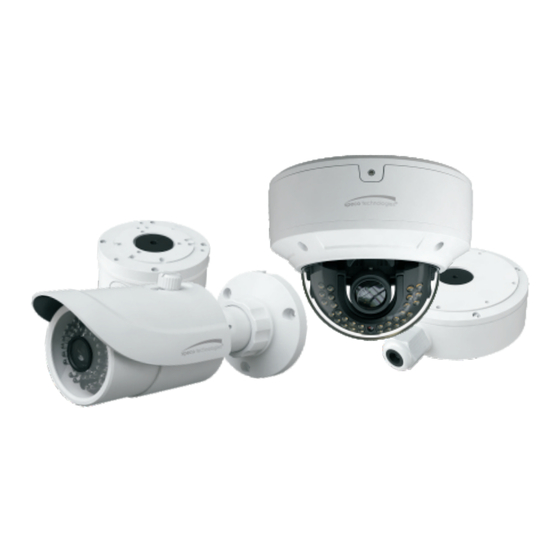
Subscribe to Our Youtube Channel
Summary of Contents for Speco H8D6M
-
Page 1: User Manual
H8D6M/H8B6M User Manual Thank you for purchasing our product. Speco Technologies is constantly developing and improving products. We reserve the right to modify product design and specifications without notice and without incurring any obligation. - Page 2 ■ If the product does not work properly, please contact the dealer or where the product was purchased. Speco Technologies is not responsible for any problems caused by improper operation or repair. ■ Keep away from liquid while in use.
-
Page 3: Installation
● Backlight Compensation (BLC) When the back of the captured object is too much bright, you can set BLC for the captured object to make it clearer. Cables Video Output Video Switch Cable Power Cable Video Switch: Four video output modes can be optional--AHD, TVI, CVI and CVBS (a) remove the cover of the video switch cable;... - Page 4 Fixed Ring ►Mounting for H8D6M 1. Loosen the screws to open the lower dome and then loosen the lock screw to remove the mounting base. 2. Attach the drill template to the place where you want to fix the camera and then drill 4 screw holes and 1 cable hole (if you want to route the cables through the mounting base) according to the drill template.
- Page 5 Route and connect the cables. And then secure the mounting base to the ceiling or wall with the screws provided. Sponge Mounting Base 4. Fix the camera to the mounting base with the lock screw. 5. Three-axis adjustment. Before adjustment, preview the image of the camera on a monitor and then adjust the camera according to the figure below to get an optimum angle.
-
Page 6: Specifications
Specifications Models H8D6M H8B6M Specifications Camera Image Sensor 1/2.5" CM S Resolution Image size 3840×2160 Video Output AHD/TVI/CVI/CVBS (*camera comes defaulted to HD-TVI) Image System PAL/NTSC Electronic Shutter Auto; 1/50s~1/100000s(PAL);1/60s~1/100000s (NTSC) IR Distance (feet) 32.8~65.6 Frame Rate 15fps Min. Illumination Color:0.01lux@F1.2, AGC ON;... - Page 7 H8B6M/H8D6M Model: Federal Communications Commission (FCC) Statements This device complies with Part 15 of the FCC Rules. Operation is subject to the following two conditions: (1) This device may not cause harmful interference, and (2) This device must accept any interference received, including interference that may cause undesired operation.









Need help?
Do you have a question about the H8D6M and is the answer not in the manual?
Questions and answers